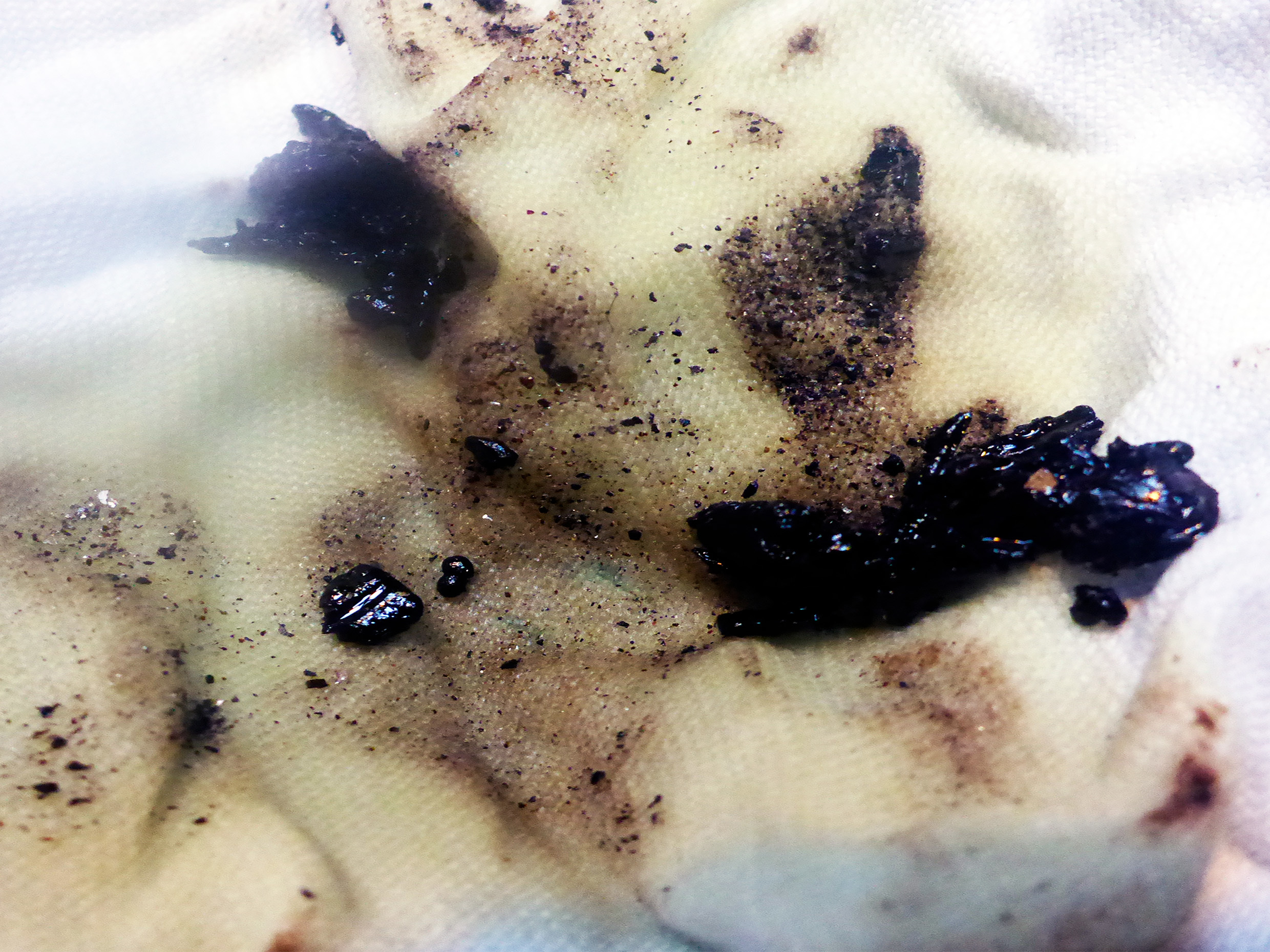Extreme operating conditions increase lubricating oil degradation and contamination in gas turbines. High lube oil stress leads to sticky deposits (varnish) on close-clearance mechanical components resulting in servo valve hanging problems and associated turbine trips.
Varnish is seen as coatings on surfaces in oil systems. Varnish has been found to be one of the most damaging impurities in oil used in industry. Varnish is a so-called soft contaminant with a strongly negative influence on the lubrication ability of the oil, thus causing reduced reliability of plant and machinery in the same way as heat, particles, and moisture.
A major problem with varnish is that the minute particles are smaller than the pores of most filters. Generally, this is why they cannot be removed by means of traditional filtration.

Varnish and soft contaminants cannot be removed by means of traditional filtration.
Varnish purification systems are able to remove soluble and insoluble particles passing through them. It is, however, the clean oil circulating in the system, which removes the coatings of varnish. These coatings are dissolved by the clean oil and transported by the oil to the purification system. This means that the cleaning process is executed during full production.
Lubricants and oil which have been strongly oxidised, and in which a heavy formation of varnish has taken place, can perhaps not be cleaned and remedied for continued use.
However, in most cases it is possible to remove varnish and other soft contaminants from the oil, enabling its continued use. Through many years, IKM Ocean Team has gained vast experience and knowledge in this field and has become a specialist in varnish removal, mainly using two different high-performance technologies for varnish clean-up:
- Balanced Charge Agglomeration (ISOPur)
- Adsorption Purification (CJC)
Balanced Charge Agglomeration
Balanced Charge Agglomeration is an off-line circulation system designed to balance the net charge of contaminants within the oil. The fluid is split into two equal paths. The particles in the fluid in one path are given a negative charge while the particles in the fluid in the other path are given a positive charge. When the two paths of fluid are recombined, the positively and negatively charged particles attract each other, growing in size and making them easily filterable.
Adsorption, a Varnish Clean-up System
Adsorption and filtration are fundamentally different. Adsorption requires an understanding of physical chemistry, whereas filtration is based on simple physical forces and removes the particles by means of compression and seepage. By combining adsorption and filtration, it is possible to increase the efficiency of varnish removal in a relatively simple, inexpensive, and compact way.
Adsorption is the physical and/or chemical binding of atoms, molecules and particles to a surface, the so-called adsorbent, which can be activated carbon or silicate. Adsorption should not be confused with absorption. Absorption is when something is soaked up by an absorbing material, like when water is soaked up by a sponge.
Adsorbing systems are installed in an off-line circuit and the adsorbing material typically used is depth-filtration cellulose filter cartridges. Such filters ensure the combined removal of particles, moisture and varnish in a single purification system. They have a large surface and, because of their chemical nature, the cellulose fibres are ideal for retaining oxidised organic molecules, for instance varnish.
The adsorption purification system is also an excellent method of purifying transformer insulating oils.
Do you have problems with varnish? Based on an analysis of the your system IKM Ocean Team will determine which method is the most effective and clean your system to your satisfaction.